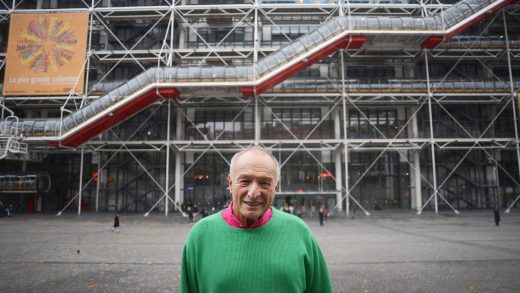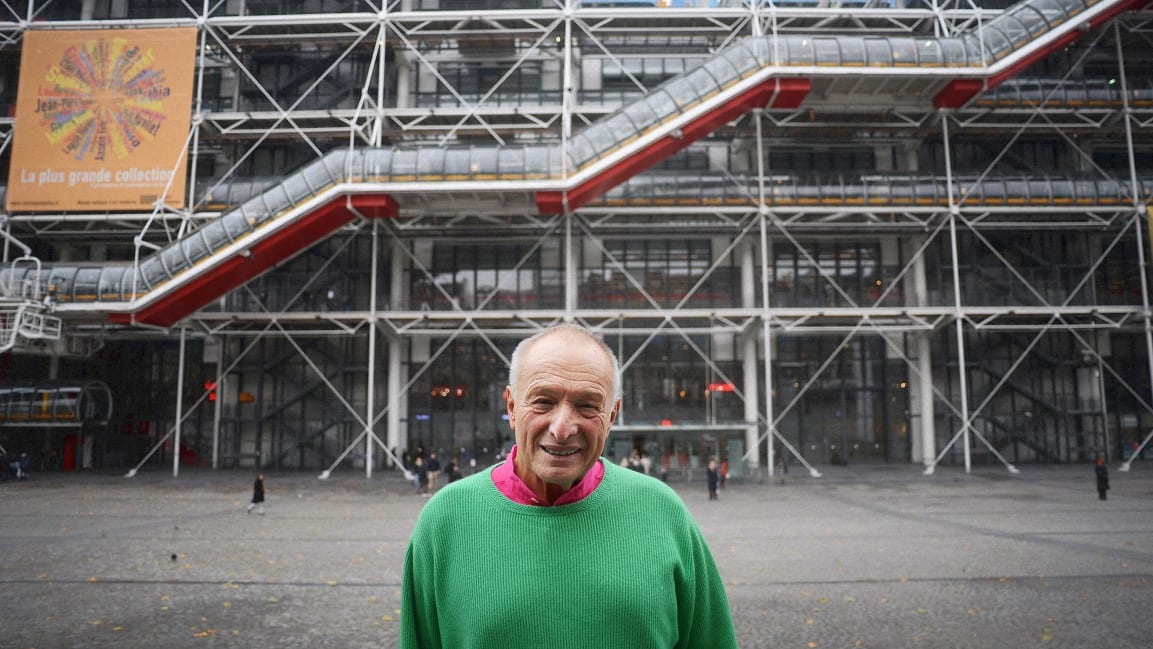Richard Rogers, the master of inside-out buildings, dies at 88
Richard Rogers, the visionary architect known for his utterly original, technologically innovative designs, has passed away at the age of 88. Rogers was regarded as one of the world’s most successful and influential architects of the past century, earning him most of his industry’s major honors, plus a knighthood in 1991.
Rogers helped design a flurry of visually striking buildings, most notably the famed Pompidou Centre in Paris and the polished-steel Lloyd’s building in London. Both of these projects placed him at the vanguard of the inside-out movement, which glorifies the entrails of a building to the point where pipes, elevators, and structural skeletons become part of its expression.
Rogers had retired last year, and his final building—a cantilevering art gallery in southern France that wears its framework on its sleeve—was completed in February this year.
Rogers was born in Florence, in 1933. He was six when his family moved from Mussolini’s Italy to England. After a tough childhood—he struggled in boarding school and only learned to read at 11—he got into the Architectural Association in London, then known as the most avant-garde architecture school in the U.K.
Later, Rogers landed a Fulbright scholarship to Yale, where he met Norman Foster (who would later become another internationally recognized architect). Rogers and Foster returned to England in the 1960s, and together with their respective wives—Su Brumwell and Wendy Cheesman—formed a partnership called Team 4, which lasted four years. Rogers then partnered with Italian architect Renzo Piano (who would go on to design The Shard in London and the Whitney Museum of Art in Manhattan), and the relatively unknown duo shot to fame when they won the competition to design Paris’ Pompidou Centre, along with fellow Italian architect Gianfranco Franchini. The Pompidou opened in 1977, after which the architects went on to start their own practices. Rogers founded the Richard Rogers Partnership, for which the Lloyd’s building was one of their first projects; decades later, in 2007, Rogers renamed the practice Rogers Stirk Harbour + Partners, where he remained until his retirement last year. Over the years, he was honored with a RIBA Gold Medal for architecture, two Stirling Prizes, and architecture’s top award, the Pritzker Prize.
Rogers’ provocative style wasn’t to everyone’s taste. His most vocal opponent was none other than Prince Charles, who famously attacked modern architecture, including Rogers’ plan to redevelop Paternoster Square near Saint Paul’s Cathedral, likening the work to the German Luftwaffe because he thought they were ruining the cityscape. Critics have referred to Rogers’ approach as “fearlessness and aggression”; and in his 1994 monograph on Rogers, the former director of the London Museum, Deyan Sudjic, wrote, “For a while it seemed that the Rogers office had become too controversial to get commissions from any clients not prepared to stand their ground and fight furiously for their right to choose the architect’s ideas.” Nonetheless, Rogers was the mayor of London’s chief advisor on architecture and urbanism from 2001 to 2008. And in 2006, his firm was selected to design Tower 3 of the new World Trade Center in New York.
Here are some of Rogers’ most striking inside-out buildings.
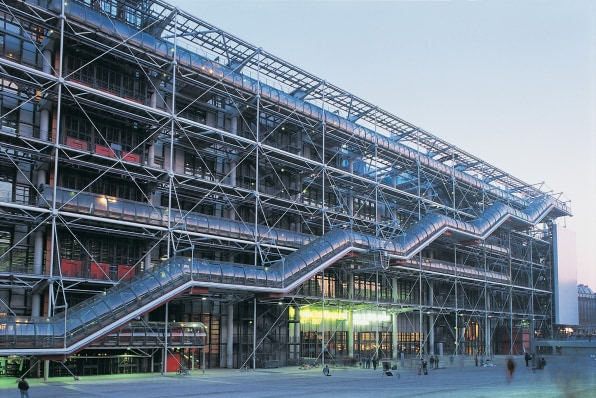
Pompidou Centre
The Pompidou Centre was the epitome of inside-out architecture, characterized by its metal skeleton and color-coded exposed ducts and services: green for plumbing, blue for temperature control, yellow for electrics, and red for circulation elements. The escalators are tucked in a clear plastic tube that crawls up the side of the building like a caterpillar.
When then-French president Georges Pompidou launched the architectural competition, a whopping 681 architecture practices applied. Rogers + Piano won, with only seven built projects under their belt. Despite initial criticism, the Pompidou has been a beloved landmark since it opened in 1977, no less because of its civic inclinations: The building occupies only half the site the architects were allotted for this project. The rest was given to the public with a sprawling plaza. Of that public space, Rogers has said that it was “one of the proudest moments of my career.”
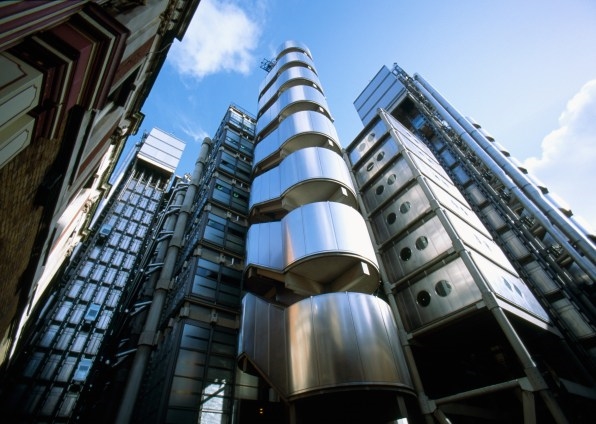
Lloyd’s of London building
Rogers continued the “inside-outside” theme in the historic center of London. Completed in 1986, the Lloyd’s building rose like a polished-steel alien in a medieval London district. The tower is wrapped in external lifts, staircases, and air-conditioning ducts, while a series of cranes, leftover from construction, extend from the roof like gargoyles.
One of the reasons Rogers chose to design these sort of buildings was to free the interiors of structural elements and create open, flexible layouts that wouldn’t be interrupted by columns. As such, the inside of the Lloyd’s building features a vertiginous, 14-story atrium, which is crisscrossed by escalators and crowned by a glass dome.
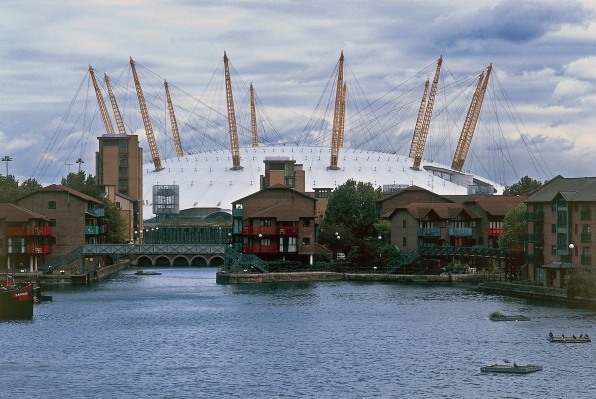
Millennium Dome (now, The 02 Tower)
In 1996, the British government was planning an exhibition for the millennium in East London. Rogers took on the project, and when it opened on January 1, 1999, the Millennium Dome, built in 15 months, was the world’s largest domed building.
Spanning some 969,000 square feet, the dome consists of a gigantic Teflon-coated glass-fiber tent suspended from 12 masts, representing the 12 months of a year (or hours on a clock face). The dome is 52 meters at its highest point, representing the weeks in a year and spans a diameter of 365 meters (for the number of days in a year). There are 24 scalloped edges at the base of the canopy, for each hour of the day. (A suspended walkway now stretches over the roof.)
Inside, the tent virtually enclosed an entire exhibition site with several pavilions contained within it. And while today the space has been given over to a highly controversial shopping center and music venue, the building itself has been widely acclaimed.
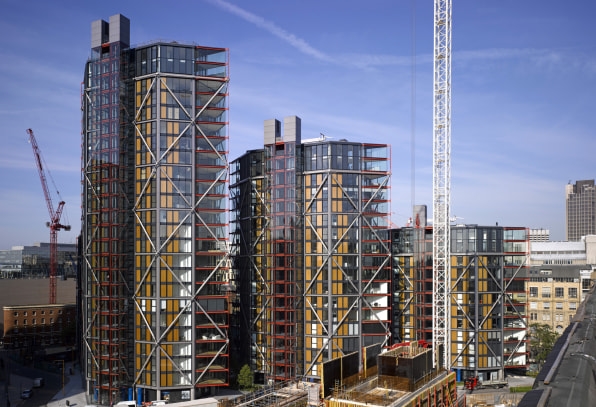
Neo Bankside
In 2013, Rogers completed Neo Bankside, a four-building complex directly opposite the west entrance of the Tate Museum in London. Much like other projects, he designed the four towers with external bracing systems. Each of these supports the building’s weight, which allowed the architects to avoid internal structural walls. As a result, the apartments boast highly flexible layouts.
Painted a bright red (like some parts of the Pompidou), the exposed steel structure is also a nod to the industrial heritage of the area, which was once dominated by the gargantuan oil-fired power station that is now the Tate Modern.
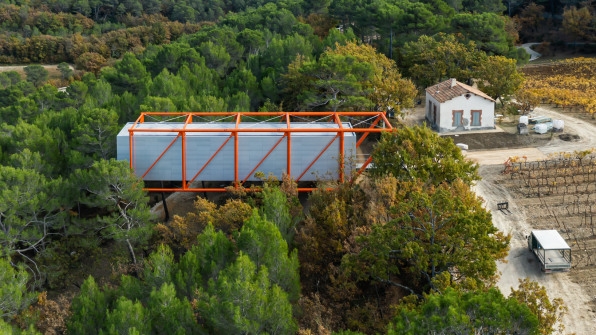
The Richard Rogers Drawing Gallery
When Rogers announced his retirement from Rogers Stirk Harbour + Partners, he still had one last project underway. The Richard Rogers Drawing Gallery opened to much fanfare in February 2021. The structure is 78 feet long, and almost all of it is suspended off the ground, cantilevering from a hillside.
Located at Château La Coste, an art-studded vineyard in Provence, France, the gallery is wrapped in a bright orange steel armature. The building only touches the ground in four places: both the corners of the armature, plus two tension rods that help create the cantilever. The gallery itself is accessed via a small bridge.
(45)

